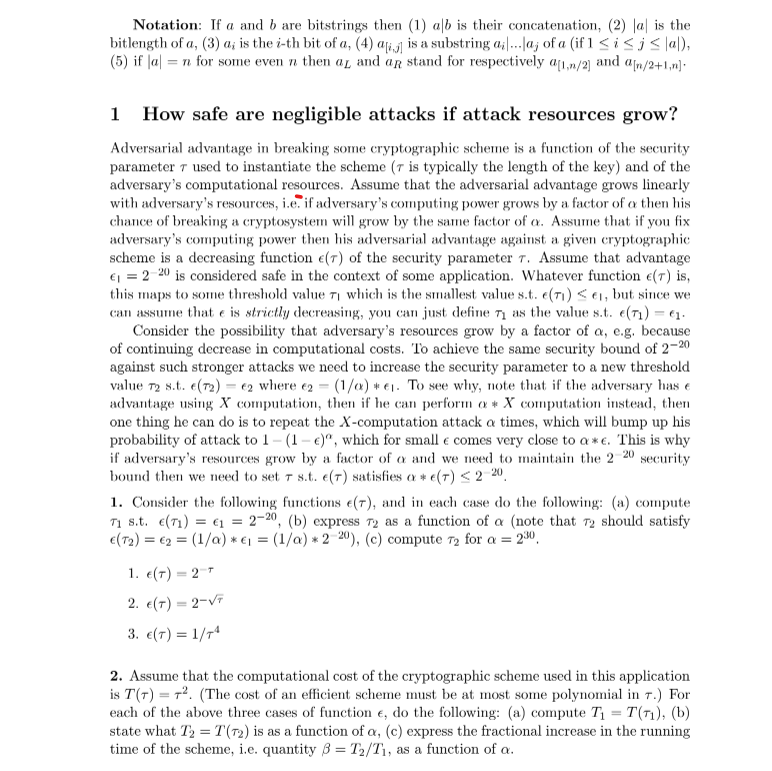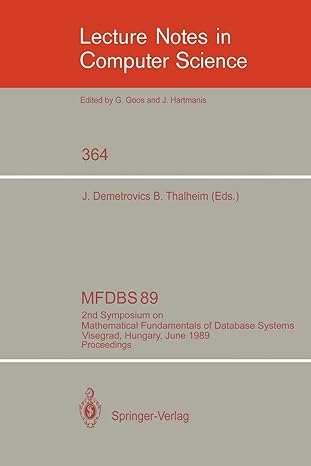Answered step by step
Verified Expert Solution
Question
1 Approved Answer
bitlength of a , ( 3 ) a i is the i - th bit of a , ( 4 ) a [ i ,
bitlength of is the th bit of is a substring of if
if for some even then and stand for respectively and
How safe are negligible attacks if attack resources grow?
Adversarial advantage in breaking some cryptographic scheme is a function of the security
parameter used to instantiate the scheme is typically the length of the key and of the
adversary's computational resources. Assume that the adversarial advantage grows linearly
with adversary's resources, ie if adversary's computing power grows by a factor of then his
chance of breaking a cryptosystem will grow by the same factor of Assume that if you fix
adversary's computing power then his adversarial advantage against a given cryptographic
scheme is a decreasing function of the security parameter Assume that advantage
is considered safe in the context of some application. Whatever function is
this maps to some threshold value which is the smallest value st but since we
can assume that is strictly decreasing, you can just define as the value st
Consider the possibility that adversary's resources grow by a factor of eg because
of continuing decrease in computational costs. To achieve the same security bound of
against such stronger attacks we need to increase the security parameter to a new threshold
value st where To see why, note that if the adversary has
advantage using computation, then if he can perform computation instead, then
one thing he can do is to repeat the computation attack times, which will bump up his
probability of attack to which for small comes very close to This is why
if adversary's resources grow by a factor of and we need to maintain the security
bound then we need to set st satisfies
Consider the following functions and in each case do the following: a compute
stb express as a function of note that should satisfy
:c compute for
Assume that the computational cost of the cryptographic scheme used in this application
is The cost of an efficient scheme must be at most some polynomial in For
each of the above three cases of function do the following: a compute b
state what is as

Step by Step Solution
There are 3 Steps involved in it
Step: 1

Get Instant Access to Expert-Tailored Solutions
See step-by-step solutions with expert insights and AI powered tools for academic success
Step: 2

Step: 3

Ace Your Homework with AI
Get the answers you need in no time with our AI-driven, step-by-step assistance
Get Started


